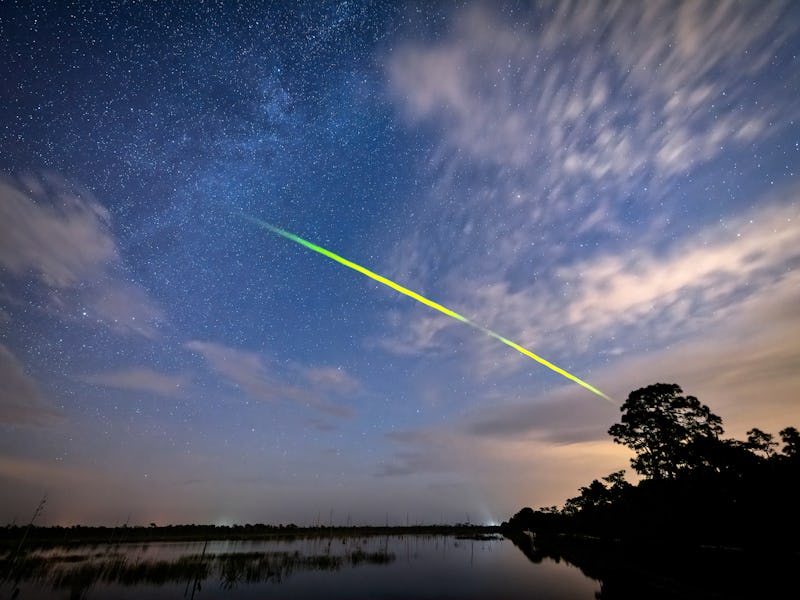You need to see the remains of Halley’s Comet in this sky this week
This year's Eta Aquarid meteor shower will light up the skies on May 4-6.

The Eta Aquarid meteor shower has been ongoing since April 19, but the remnants of Halley’s Comet will appear briefly bright in our skies on May 4-6.
While most meteor showers have a brief encounter with Earth, the Eta Aquarid stays for a month, with intermittent meteors throughout the night. The May 4-6 window marks a short-lived peak, allowing astronomy enthusiasts to gaze up at their beauty and see the remains of Halley’s Comet streak across our sky.
The comet, which returns to Earth around every 76 years, is one of the most anticipated once-in-a-lifetime celestial viewings. The Eta Aquarids are a small way to see remnants of the big show in the interim. If you want to see the real deal comet, you’ll have to wait another 40 years, whereas the Aquarids come back every year.
When to see the Eta Aquarid meteor shower?
The Eta Aquarid meteor shower started to peak on the morning of May 4, and continue to rain down with consistent fireballs until May 6.
Astronomers are expecting the highest volume of meteors on Wednesday morning just before dawn, according to EarthSky. But Thursday morning will also see light sprinklings of the Eta Aquarid meteor shower. The constellation will appear near the horizon around 3 a.m.
Around this time, the Moon will be in a waning crescent phase and so its light will not interfere with the meteor shower display.
The annual Eta Aquarid meteor shower originate from Halley’s Comet, which takes about 76 years to orbit around the Sun.
Where to see the Eta Aquarid meteor shower?
The Eta Aquarids can be viewed in both the Northern and Southern hemispheres. However, the meteor shower is more active in the Southern hemisphere.
Their radiant, or the point in the sky from which they appear to come from, is the constellation Aquarius. Aquarius, also known as the water bearer, can be found in early morning hours toward the east in the Northern hemisphere, or directly overhead if you’re in the Southern hemisphere.
During its peak, the Eta Aquarids produce around 20 to 40 meteors per hour. But if you’re in the Northern hemisphere, you may only see about 5-10 meteors per hour, because of its location close to the horizon.
In the Northern hemisphere, the meteors can sometimes be seen as “earthgrazers,” or meteors with long tails that appear to skim the surface of the Earth at the horizon, according to NASA. This makes them brighter than regular meteors and easier to spot.
What causes meteor showers?
Meteor showers are created from the bits of debris that fall from comets and asteroids. As these rocky bodies of frozen gas, dust, and other material travel toward the Sun, the star's powerful gravitational pull can weaken them, breaking them apart as they draw near. Most meteors in meteor showers are between the size of a grain of sand and a pebble, according to the American Meteor Society.
The dust that trails from comets forms into a debris field in their orbit, and Earth passes through these trails each year during its orbit around the Sun.
These interstellar travelers are made up of material that likely dates back to the formation of the Solar System, making them important fonts of information about how our cosmic neighborhood came to be. Crucially, some of that dust interacts with Earth's atmosphere and disintegrates, forming the fiery streaks that we observe in the sky as meteor showers.
Eta Aquarids originate from the famous Halley’s Comet, which made its last run through the inner solar system in 1986, and is not expected back until the year 2061.
The comet’s nucleus sheds a layer of ice and rock into space each time it passes the Sun, and the dust grains turn into the Eta Aquarid meteor shower in May and the Orionid meteor shower in October.
This article was originally published on